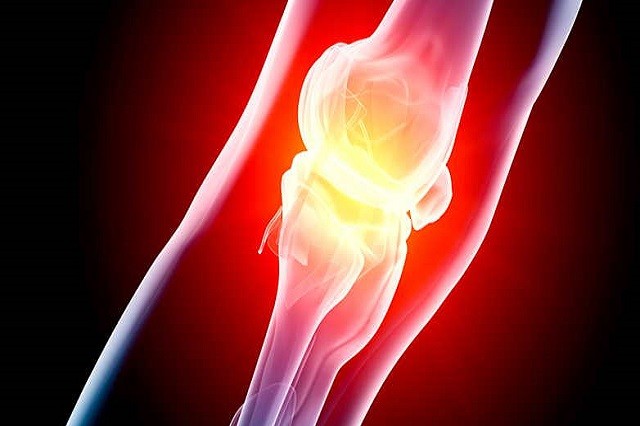1. Definition
Rheumatoid arthritis is an autoimmune disease. The arthritis is caused by the body’s immune system mistaking its own tissue cells to be foreign, thus continuously releasing white blood cells to attack the perceived invasion. As a result, patients suffer from pain, swelling and inflammation.
A joint is the point where two or more bones come together. With a few exceptions (in the skull and pelvis, for example), joints are designed to allow movement between the bones and to absorb shock from movements like walking or repetitive motions. The ends of the bones are covered by a tough, elastic tissue called cartilage. The joint is surrounded by a capsule that protects and supports it. The joint capsule is lined with a type of tissue called synovium, which produces synovial fluid, a clear substance that lubricates and nourishes the cartilage and bones inside the joint capsule.
Rheumatoid arthritis often affects multiple (5 or more) joints in the body. The inflammation normally occurs at the lining of the joints (synovial membrane) but can affect other organ as well. Prolonged inflammation can lead to erosions of the cartilages and bones, which will subsequently lead to joint deformity. As damages are done with each recurrence, long time sufferers of rheumatoid arthritis may find their joints worn away and deformed.
Progression of rheumatoid arthritis can be divided into three courses:
– Monocyclic: one episode from diagnosis within 2 to 5 years of treatment.
– Polycyclic: the disease activity fluctuates over the course of the condition (flare-ups).
– Progressive: rheumatoid arthritis continues in its severity and does not decrease throughout the course of the condition.
2. Epidemiology
Rheumatoid arthritis is the most common type of autoimmune disease. It is approximated that 1.5 million people in the US suffering from the condition, and international statistic puts the number of patients from 0.4 to 1.3% of total populations.
Rheumatoid arthritis is a condition that begins particularly in middle age and increases in frequency with age, although young people may be diagnosed with the condition. It occurs in all population regardless of ethnicity and race.
However, rheumatoid arthritis, along with other form of rheumatism, occurs much more frequently in women than men. It is estimated that 1-3% of women will suffer rheumatoid arthritis in their lifetime.
Rheumatoid arthritis often has serious co-morbidities such as cardiovascular diseases, infections, mental health conditions or cancers.
3. Causes and risk factors
The cause of rheumatoid arthritis is currently unknown. It is thought to be involved with the interaction between genetic factors and environment stresses.
Risk factors of rheumatoid arthritis could include:
– Age and gender: women have a higher incident rate than men, and the disease is correlated with increasing age.
– Genetics
– Smoking
– Contraception & Hormone replacement therapy
– Pregnancy and breastfeeding
– Early life exposure
Sources
http://www.niams.nih.gov/Health_Info/Rheumatic_Disease/default.asp
http://www.cdc.gov/arthritis/basics/rheumatoid.htm
http://www.rheumatology.org/I-Am-A/Patient-Caregiver/Diseases-Conditions/Rheumatoid-Arthritis


